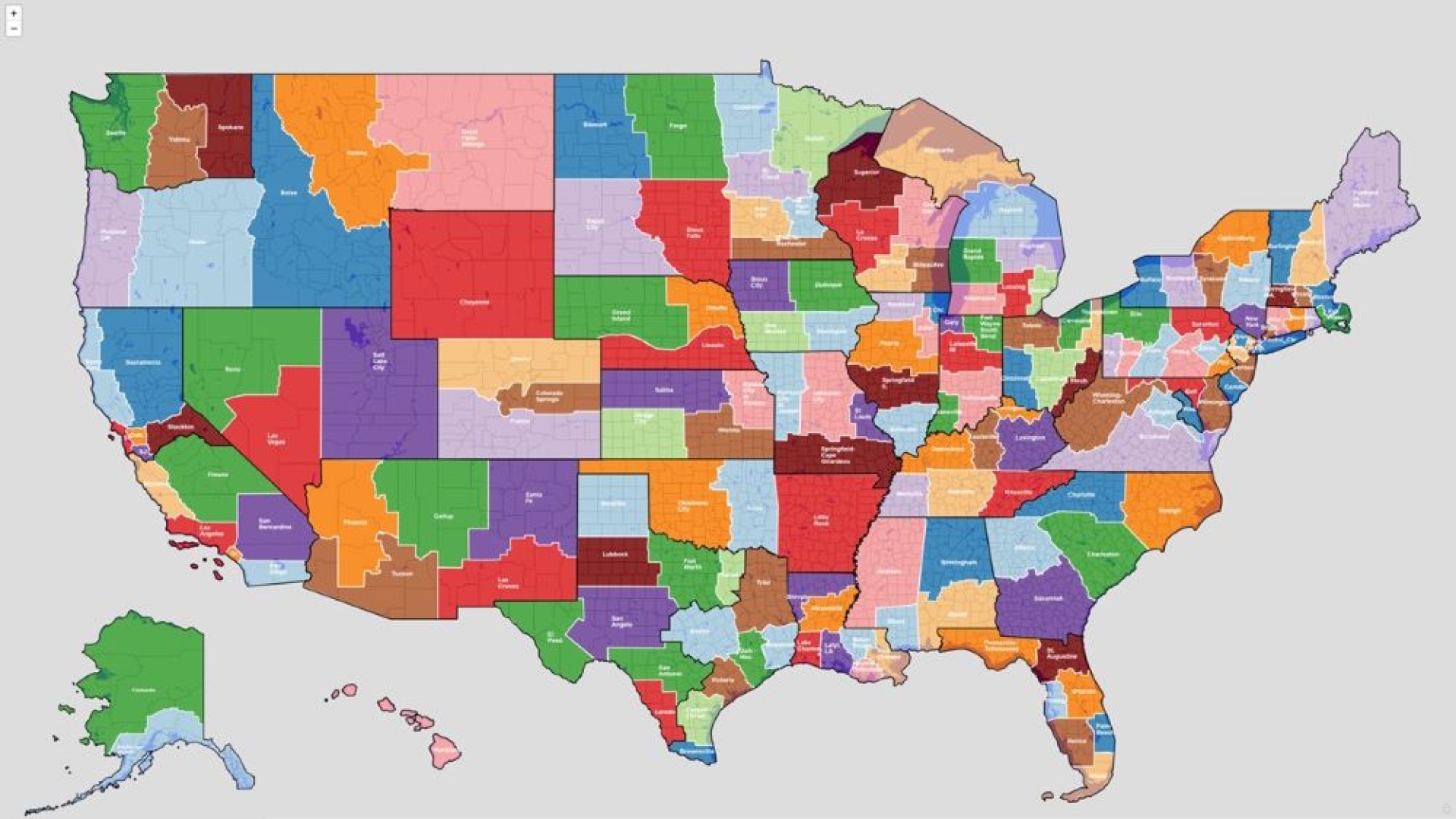Toward a Remaking of the American Episcopacy

Map of American dioceses
On March 19, 2024, Cardinal Blase Cupich--known to be close to Francis--turned 75 years old, the age limit for exercising his office. In total, a little less than half of American dioceses will become vacant by 2025, giving the Pope the opportunity to lastingly reshape an episcopate that has made life difficult for him since 2013.
The United States has 194 Catholic dioceses; of these, eight are now vacant, while 11 have at their head bishops who are already at or over the age of 75 but whom the Supreme Pontiff has left in place to give himself more time to find successors.
By March 2025, many “heavyweights” of the American episcopate will have--or already have--sent Rome their letter of retirement: such as Cardinals Seán O’Malley, Wilton Gregory, Daniel DiNardo, Blase Cupich, and Timothy Dolan.
Will Pope Francis act quickly to appoint new Ordinaries to the 27 dioceses whose current bishops will have passed the age limit by 2025? It is the wish of the progressive sphere: “If the Pope wants to remake the hierarchy in a more Francis-friendly vision,” Michael Sean Winters of the National Catholic Reporter writes, “we should be getting at least two appointments each month.”
This is a sentiment shared by Michael Heinlein, who thinks that Rome should fill the positions more quickly, “Unless that’s a plan that’s in the works and will soon be revealed.”
The Two-Tiered Method of Pope Francis
As the National Catholic Register reports, “Since becoming pope in March 2013, Francis has appointed roughly half of the current U.S. bishops.” This allows us to trace the outlines of what we can describe as the “two-tiered method” used by the Vatican.
To episcopal seats of lesser importance, the current Roman Pontiff has a tendency to name practical men who are engaged in social matters but nonetheless disinclined to embrace progressive views and to stray from the theological sensibility of the United States Conference of Catholic Bishops (USCCB).
Some examples would be the recent nominations of Bishop William Wack to the seat of Pensacola-Tallahasee (Florida), Bishop Donald DeGrood to Sioux Falls (South Dakota), and Bishop-elect James Ruggieri to Portland (Maine).
For the most important dioceses--especially those which open access to the red hat--Rome shifts gears to privilege the prelates having “more of an ideological common denominator” and a “progressive bent,” Michael Heinlein believes. For example, Cardinal Wilton Gregory of Washington, D.C. and Cardinal Blase Cupich of Chicago, only to mention two cases.
The former secretary of public affairs for the USCCB, Russell Shaw, confirms that Francis is appointing American cardinals among his partisans: Archbishop José Gomez, former “heavyweight” conservative of the USCCB, has been through nine consistories without attaining the rank of cardinal, but Bihsop Robert McElroy of San Diego, who embodies the progressive wing, was elevated to the cardinalate.
This is a method that the Pope’s agenda can partially illuminate, but which is also explained by the lack of candidates for the episcopate: in 2022, Cardinal Marc Ouellet--former Prefect of the Dicastery for Bishops--disclosed that, on average, three candidates in ten at the time already refused their elevation to the supreme degree of the sacrament of Orders.
“So when you’re looking for good bishop candidates, if ideology is what you’re looking for, you’re probably going to have a hard time filling the slots,” Heinlein observed.
(Sources : Vida Nueva/National Catholique Register – FSSPX.Actualités)
Illustration : Kenneth Burchfiel, CC BY 4.0, via Wikimedia Commons





